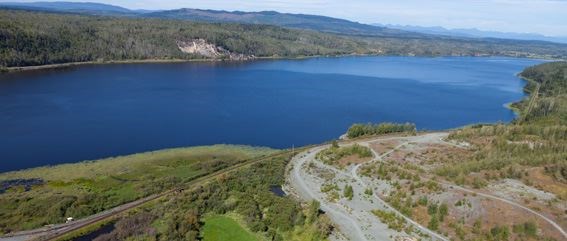The following is an interview with Graymont's Giscome Project Manager David Chamberlain and Environmental Health & Safety Manager Rob Beleutz about the company's plans for its proposed lime plant and limestone quarry near Giscome.
Q: Where is the proposed plant and quarry going to be located?
RB: The proposed site is in Giscome, which is about 40 minutes northeast of Prince George and near the southwest corner of Eaglet Lake.
Q: What will the facility consist of?
DC: It includes a limestone quarry, a lime processing plant and an overland conveyor to move crushed limestone from the quarry to the plant site.
Q: What was previously on that site?
RB: The lime plant will be located on land that was previously a stone quarry owned and operated by CN Rail. There was also a lumber mill that operated in Giscome from around 1912 to 1975. Our proposed limestone quarry is located on BC Crown land in the Traditional Territory of the Lheidli T'enneh First Nation, approximately five kilometres from the plant site.
Q: What will the plant produce?
DC: The plant will produce lime products used mainly in pulp and paper manufacturing and mining in the North. There is enough high-quality limestone for at least 50 years of operation. It's an advantage that the site has such easy access to a major rail line and good quality roads, too.
Q: How many people will the facility employ?
DC: There will be a lot of contract work available during the project's construction, of course. But once we're up and running, we expect there will be about six to 10 seasonal jobs at the quarry and another 15 or more full-time jobs at the plant, with the majority of the jobs filled by people in the local community. There will be other contract work opportunities as well, in trucking, road maintenance, special trades, fabrication and so on.
The Giscome area already has an important economic and social history based on industrial lumber production and railway activities. Our project is designed to fit into the local environment while also providing opportunities to the Lheidli T'enneh First Nation and the local economy.
Q: Are there potential environmental issues?
RB: We plan to build a facility that will be a model of environmentally and socially responsible practice for the industry. For instance, our facility does not require any water in the lime manufacturing process and there is no wastewater generated from the processing of lime. Collection ponds will capture surface run-off from the quarry and plant sites so we can run tests and ensure the water is clean before it's released.
Q: Where are you at in the development process and when do you expect the facility to open?
DC: We received our BC Environmental Assessment Certificate last December, and we are now in the process of applying for the appropriate environmental and mining permits. We hope to start construction in 2019 or 2020.
Q: What about noise, air quality and increased truck traffic?
RB: We are adopting world-class environmental practices, so we're investing in noise suppression and dampening and reducing lights at night. We will minimize material handling at the lime plant to reduce dust and we have designed dust collection throughout the process. We will reduce 'night-lights' by using directional lights and timers.
Q: Is there any concern about the site's proximity to Giscome Elementary School?
DC: We don't expect the project to have any impact on the educational and recreational activities at the school. During the environmental assessment and project design process and after completing extensive studies, we were careful to review any potential impacts on school activities. Of course, we're always happy to discuss any specific concerns educators, parents or students might have.



